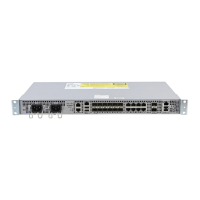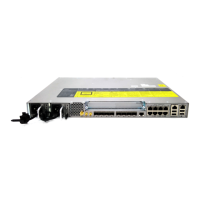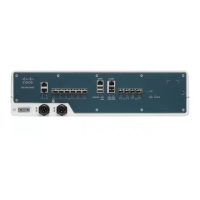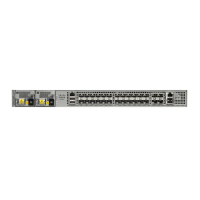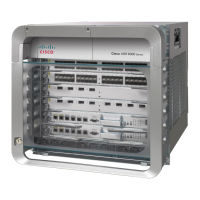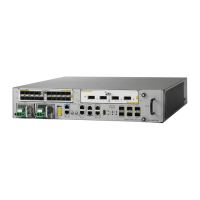◦ Translate—1 to 1) changes a tag value; 1 to 2) pops one tag and pushes two tags; 2 to 1) pops two
tags and pushes one tag; 2 to 2) changes the value for two tags
• Forwarding commands—Each EFP specifies the forwarding command for the frames that enter the EFP.
Only one forwarding command can be configured per EFP. The forwarding options are as follows:
◦
Layer 2 point-to-point forwarding to a pseudowire tunnel
◦
Multipoint bridge forwarding to a bridge domain entity
◦
Local switch-to-switch forwarding between two different interfaces
• Feature commands—In each EFP, the QoS features or parameters can be changed and the ACL can be
updated.
Service Instances and Associated EFPs
Configuring a service instance on a Layer 2 port creates a pseudoport or EFP on which you configure EVC
features. Each service instance has a unique number per interface, but you can use the same number on different
interfaces because service instances on different ports are not related.
An EFP classifies frames from the same physical port to one of the multiple service instances associated with
that port, based on user-defined criteria. Each EFP can be associated with different forwarding actions and
behavior.
When an EFP is created, the initial state is UP. The state changes to DOWN under the following circumstances:
•
The EFP is explicitly shut down by a user.
•
The main interface to which the EFP is associated is down or removed.
•
If the EFP belongs to a bridge domain, the bridge domain is down.
•
The EFP is forced down as an error-prevention measure of certain features.
Use the service instance ethernet interface configuration command to create an EFP on a Layer 2 interface
and to enter service instance configuration mode. Service instance configuration mode is used to configure
all management and control data plane attributes and parameters that apply to the service instance on a
per-interface basis. The service instance number is the EFP identifier.
After the device enters service instance configuration mode, you can configure these options:
•
default--Sets a command to its defaults
•
description--Adds a service instance-specific description
•
encapsulation--Configures Ethernet frame match criteria
•
exit--Exits from service instance configuration mode
•
no--Negates a command or sets its defaults
•
shutdown--Takes the service instance out of service
LAN Switching Configuration Guide Cisco IOS XE Everest 16.5.1 (Cisco ASR 900 Series)
54
ITU-T G.8032 Ethernet Ring Protection Switching
Service Instances and Associated EFPs

